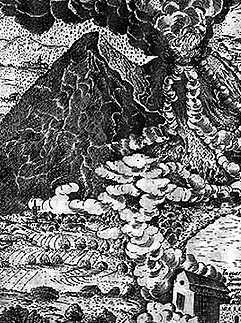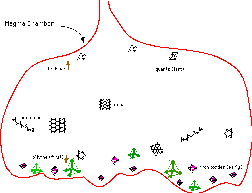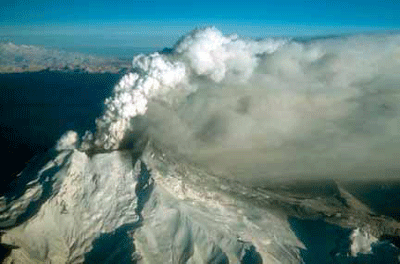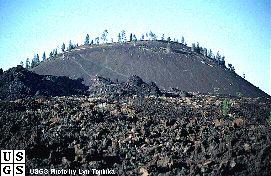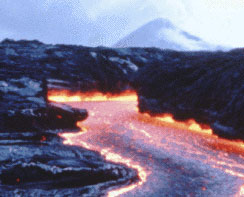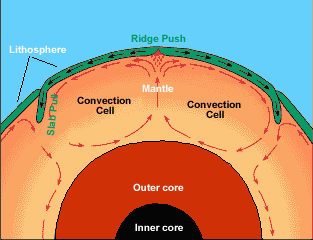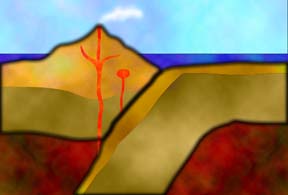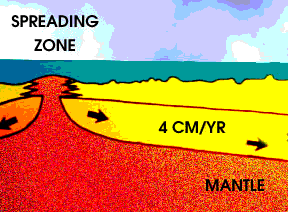Click on image for full size
Image courtesy of: Dr. Boris Behncke. Artist: Giovan Batista Passaro This account of the eruption of Mt. Vesuvius was modified from the Vesuvio website.
The ad79 Eruption of Mt. Vesuvius
After many centuries of quiet, the eruption began at about noon on 24 August of A.D. 79, and lasted until the next day. Sometime during the preceding months there were the usual signs of an impending eruption, such as ground uplift and numerous small local earthquakes.Around 1300 on 24 August a tall eruption column rose above Mt. Vesuvius and tephra began to fall. In the area around Pompeii the thickness of the tephra layer increased by 6 to 8 inches per hour. The pumice clasts which comprised the tephra were up to 3 inches in diameter. Because these mini-boulders arrived with speeds of up to 100 miles/hour, they may have caused injuries and isolated deaths, and should have, after a few hours, caused the collapse of roofs. Soon the city was enshrouded in complete darkness, a phenomenon that is familiar to other populations involved in eruptions such as those at Mount St. Helens, and Mt. Pinatubo. The residents probably did not even know what kind of event was striking them, and waited in their homes, hoping that the shower of rock would sooner or later come to an end.
After seven hours of continuous explosive activity, the eruption tapped a lower, less evolved portion of the magma chamber, and the composition of the eruption abruptly changed, implying a sharp interface between two magma types in the magma chamber. The eruption siginficantly gained in vigor, and the ash column rose much higher in altitude. For five more hours, pumice fell. By the early morning (about 0100) of 25 August, about 1.5 yards of pumice covered the Pompeii area.
A second change in the eruptive dynamics then occurred. The eruptive vent widened such that local gas pressure could no longer push up the tall eruption column. This phenomenon is what scientists call collapse of the eruption column. The mixture of gas and ash no longer rose up, but immediately fell back onto the slopes of the volcano, forming glowing avalanches of pyroclastic flows which rushed rapidly down slope, destroying everything in their paths. This change in the eruptive dynamics proved fatal to the thousands of people around the volcano. The Roman towns of Pompeii and Herculaneum were destroyed in a matter of minutes.
Pompeii and Herculaneum were rediscovered in the 18th century with many treasures intact. The reconstruction of these cities gives a vivid idea of what Mt. Vesuvius is able to do.


